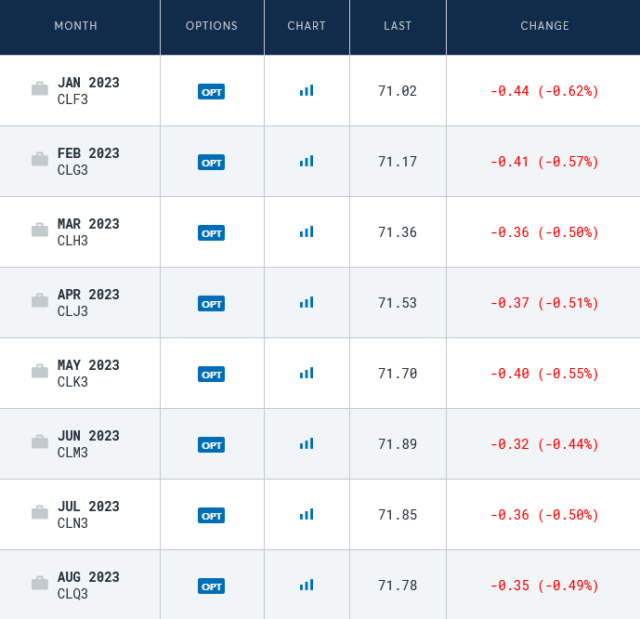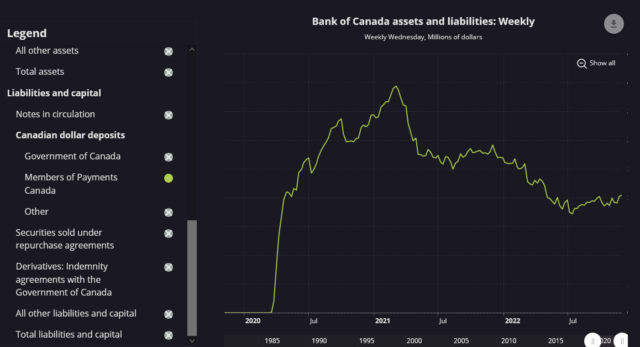For those not familiar with the noun scrip, look at the Wikipedia article.
Historically scrip was issued by large companies to physically remote workers, for usage in their own facilities. The Hudson’s Bay Company was a classic example of this. In some cases, company scrip was nearly as good as money.
Today in our 21st century, we have digital scrip in the form of Apple and Google Play cards, in addition to more generalized gift certificates and the like.
Cryptocurrency is another innovation which is functionally the scrip of those that voluntarily choose to engage in the transaction of such digital tokens.
Sovereign currency, such as the US dollar and UK Pound, historically used to represent a certain amount of gold or silver, but those days have long since passed. The fiat currencies we use are backed with a single promise, and that is the ability to pay taxes to the government. Other than this fundamental value, fiat currencies trade on the perception of value conveyed by their participants. While scrip definitionally is referring to non-sovereign currency, functionally speaking, the green, red and brown pieces of polymer we hand around is a form of scrip, albeit with more legal authority.
However, with the digitization of everything, we are witnessing the fragmentation of various scrip. We see increasingly sophisticated schemes by scrip issuers to incentivize various behaviours of the recipients.
One 20th century invention was the Air Miles concept – spend in a preferred manner and eventually receive enough to purchase a commodity “for free” that otherwise would be wasted – an empty airline seat.
On the advent of this came a whole plethora of reward schemes.
However, all of these schemes are subject to the issuer’s fiat. We have seen this in the sovereign context when a country decides to devalue a fixed-peg currency (just look at the Argentina Peso as a great example).
Also, nominally valued scrip is subject to the ravages of inflation. A Costco gift card purchased a couple years ago most certainly purchases a lot less today than it did when it was originally purchased.
It is interesting to note that strict gift cards (money for store credit) have legislative protection (at least in British Columbia) and must be held as a liability to the issuer in perpetuity. Only monetary inflation of the underlying currency degrades the value of this scrip.
However, the story is different with reward schemes. Similar to sovereign currency devaluations, owners can be spontaneously diluted. An airline seat costs more miles to purchase, or perhaps the availability of seating is less desirable.
Reward schemes are everywhere now, to the point where nearly every single major corporation out there with any retail presence has these annoying and low value (to the consumer) schemes to incentivize certain behaviours. The promoter of the program wants to pull off an Aimia (the payday is selling the accumulated customer data on the points program), while the end retailer wants to drive certain types of sales using scrip as incentive. It is nearly always to the detriment of the consumer.
In Canada, most recently I noticed the Freshco/Safeway/Sobeys chain (owned by Empire (TSX: EMP.A)) is subscribing to “Scene”, which was originally a creation of Cineplex (TSX: CGX) and Scotiabank (TSX: BNS) to give people free movies.
Other grocery stories, such as Save-on-Foods (Save on More) and Superstore/Shoppers Drug Mart (Loblaws/George Weston) (L.TO/WN.TO) have their own scrip schemes – PC Points.
Suncor (TSX: SU), via Petro Canada, runs a popular “Petro Points” scheme.
McDonalds (NYSE: MCD), and all the other fast food operations, which are “appifying” themselves, have their own arbitrary points system.
It goes on, and on and on, and the hapless consumer is plagued by the administrative burden of figuring out if any of this is worth the time/energy hassle to functionally get minor discounts off their aggregate purchases.
What’s great from the company perspective is that you can effectively be your own central bank and decide to pull the rug on your customers whenever you want without any recourse by those holding the scrip.
Nothing illustrated that better than Starbucks (Nasdaq: SBUX) pulling off a “Christmas surprise” on their rewards program.
Their original scheme was that for every dollar you purchased stuff at their stores, you would receive two stars. Accumulate 50 stars and get a free coffee. Accumulate 150 and get a free fancy drink.
Effective in February, they announced that this will now be 100 stars (a 100% inflation) and 200 stars (a 33% inflation), respectively.
What’s funny is that when the inevitable blowback came on Twitter, the generic response was:
Hello, we continually want to update the Starbucks Rewards program so that we’re meeting the changing needs of our members while ensuring we’re still able to deliver some of the benefits members know and love.
Learning the language of corporate-speak is a reason why I would perish in a corporate communications role. The dishonesty would drive me insane.
The reality is that I am sure there was a cottage industry of people banking Starbucks scrip and this liability (in addition to future liability) needed to get whittled down in the face of a rapidly escalating cost environment.
Fortunately, I do not subscribe to many of these schemes, but as scrip systems continue to get more and more fragmented, there may be less of a stimulatory effect on the consumer, resulting in a dimunition of such schemes as they aren’t going to be nearly as lucrative as the original scrip schemes were.
However, for now, definitely the lesson is if you’ve been accumulating scrip, it’s generally good to spend it as you get it.
The ultimate test of this theory will be when sovereign nations start to centralize currency distribution via the speculated central bank digital currency (CBDC) scheme. It will be politically inevitable that CBDCs will eventually be tinkered with in a manner similar to corporate reward schemes. “Buy ESG-compliant product XYZ for 20% less CBDC dollars!”, or “Donate to Ukraine and receive a 10% tax credit off of your capital gains tax on your next disposition of Russian corporate debt!”, etc.
Initially, the rollout of CBDCs will be a straight replacement for currency, but just like how the Income Tax Act has been perverted beyond all reason, the currency itself will be tinkered around with for political reasons to incentivize certain behaviours.
The difference between adding complexity to the Income Tax Act and adding complexity to your nation’s sovereign currency is that a currency derives value from being fungible and universally accepted. A “rewards scheme” CBDC will inevitably chip away at this, which will ironically depreciate the value of such currency.
It makes me wonder if barter is going to make some sort of comeback.

